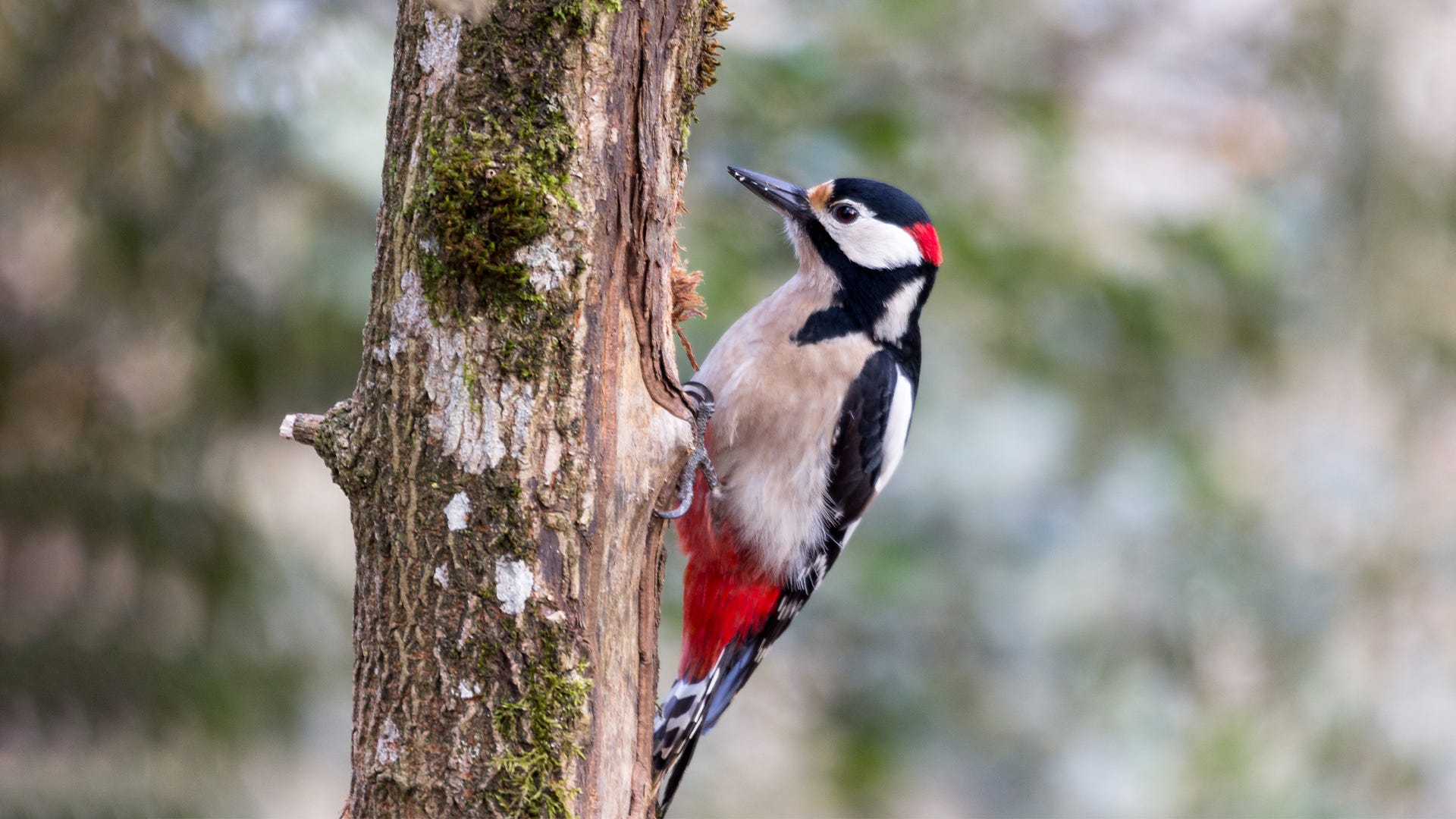Observing Woodpeckers in Florida: Types Diversity and Distribution
Observing Woodpeckers in Florida: Types Diversity and Distribution
Blog Article
Woodpeckers: A Comprehensive Overview to Recognizing These Distinct Birds
Woodpeckers, with their distinctive habits and physical attributes, have actually long astounded the inquisitiveness of ornithologists and nature lovers alike. From their rhythmic drumming echoing via the timbers to their remarkable adaptations for scaling tree trunks with convenience, these birds offer an interesting research study in avian biology. Nevertheless, what absolutely sets woodpeckers apart is not simply their striking look however also their essential function in preserving the fragile equilibrium of environments. As we explore the detailed anatomy, varied types, and ecological relevance of woodpeckers, a deeper admiration for these unique birds and the enigmas they hold unfolds.

Woodpeckers' Drumming Behavior
Woodpeckers show a balanced and specific drumming actions that offers various vital functions in their lives. This behavior is primarily related to interaction, area defense, and foraging. The distinct drumming audio is developed by the fast pecking of their beaks against hard surface areas such as tree trunks, branches, and even metal objects.
Interaction is a critical element of woodpecker actions, and drumming plays a substantial function in this procedure. Woodpeckers utilize drumming to establish their visibility, bring in companions, and keep call with their companions and spawn. The regularity, strength, and period of drumming sequences communicate details messages to various other woodpeckers in the area.
In enhancement to interaction, woodpeckers utilize drumming behavior for area protection. Woodpeckers in Florida. The loud and repetitive drumming works as a warning to prospective trespassers, indicating that the area is currently asserted. By establishing their region via drumming, woodpeckers reduce the possibility of conflicts over beneficial resources such as food and nesting sites
Moreover, woodpeckers additionally use drumming as a foraging technique. The balanced pecking assists them locate pests concealing beneath the bark of trees by producing vibrations that disrupt the prey's camouflage. This behavior showcases the adaptability and ingenuity of woodpeckers in utilizing their drumming abilities for numerous necessary purposes.
Special Adaptations for Tree Climbing
Having understood the art of drumming to connect, defend region, and forage, woodpeckers have actually evolved unique adaptations that facilitate their amazing climbing capabilities in their arboreal habitats. Woodpeckers have zygodactyl feet, with two toes directing ahead and 2 toes directing backwards. These tail feathers offer stability and balance, enabling woodpeckers to maneuver up tree trunks with precision and agility.
In addition, woodpeckers have effective neck muscular tissues and an one-of-a-kind head framework that aid in their climbing abilities. Their solid neck muscular tissues permit them to quickly peck at tree bark without experiencing whiplash, while their thick skull and small mind work as shock absorbers, shielding them from the influence of duplicated drumming. These adjustments jointly make it possible for woodpeckers to browse the vertical world of trees with performance and elegance.

Duty of Woodpeckers in Ecological Communities
Playing an essential role in forest ecological communities, woodpeckers contribute substantially to the equilibrium and health of their habitats with their one-of-a-kind habits and communications with various other species. One of the crucial eco-friendly functions of woodpeckers is their role in managing insect populaces. By foraging for pests under the bark of trees, woodpeckers aid regulate insect populations, protecting against outbreaks that could harm the general health and wellness of the woodland. In addition, woodpeckers develop cavities in trees that act as crucial nesting sites for a range of other bird types, promoting biodiversity within the environment.
Furthermore, the drumming and vocalizations of woodpeckers play a crucial function in communication and territory facility. These audios not just serve to attract mates yet additionally assist specify limits between different woodpecker regions, read what he said lowering problems and promoting a harmonious conjunction within the woodland community. Generally, the existence of woodpeckers in forest ecosystems highlights their relevance as keystone types, influencing the characteristics and working of these habitats in complex methods.
Makeup: Specialized Beaks and Feet
In the elaborate internet of forest ecological communities, the specialized beaks and feet of woodpeckers are vital adjustments that allow them to meet their crucial environmental duties. Woodpeckers have distinct anatomical functions that are especially developed to assist them in their foraging and nesting behaviors.
The most distinct feature of woodpeckers is their strong, chisel-shaped beaks. These beaks are completely adjusted for drilling into timber to reveal insects, larvae, and basics sap covert under the bark of trees. The solid muscles and strong framework of their beaks allow woodpeckers to peck at a price of up to 20 times per second without causing damage to their skulls.
Furthermore, woodpeckers have actually specialized feet that aid in their acrobatic climbing up capacities. Their feet have 2 toes pointing ahead and 2 toes directing in reverse, providing a strong hold on vertical surfaces (Woodpeckers in Florida). This one-of-a-kind foot setup, along with stiff tail feathers that serve as a helpful prop, enables woodpeckers to stick to tree trunks and branches with convenience while they search for look at these guys food or dig deep into nesting cavities
Woodpecker Species Diversity
Woodpeckers are a varied group of birds found throughout various ecosystems worldwide, with over 200 well-known species showing adjustments to different settings. Woodpeckers have actually developed to occupy an array of settings, from forests and timberlands to meadows and deserts, each presenting one-of-a-kind difficulties that have affected the advancement of distinct woodpecker varieties.
These adjustments allow woodpeckers to forage successfully in their respective habitats, minimizing competitors among types and advertising particular niche differentiation. Additionally, geographical isolation and historic variables have actually played a role in shaping the distribution and variety of woodpecker varieties, leading to the wide range of specialized adaptations seen in these interesting birds.

Verdict
In conclusion, woodpeckers are remarkable birds that exhibit unique drumming actions, specialized adaptations for tree climbing, and play crucial roles in environments. With a diverse variety of woodpecker varieties found worldwide, these birds are crucial for preserving the wellness and balance of forests and forests.
Report this page